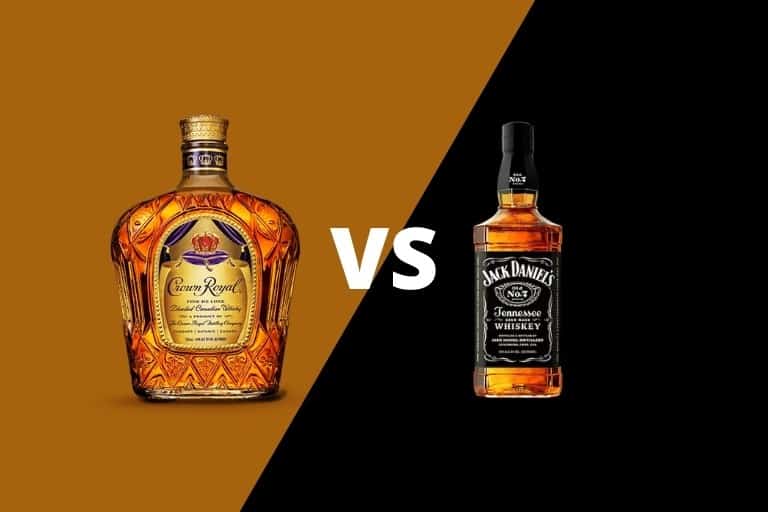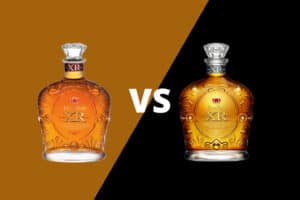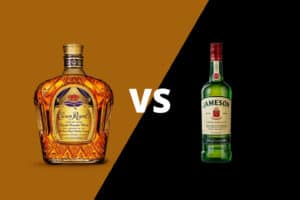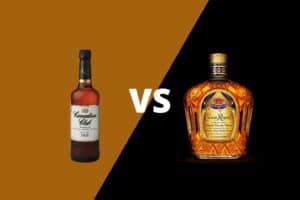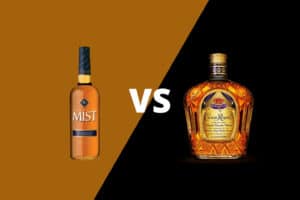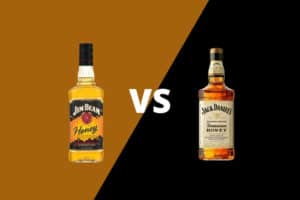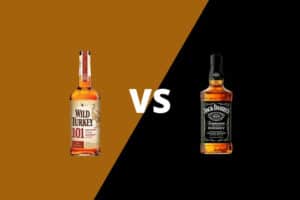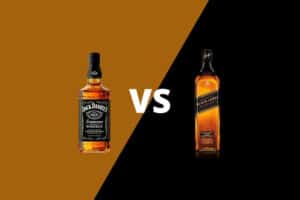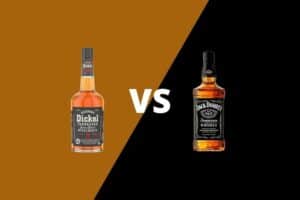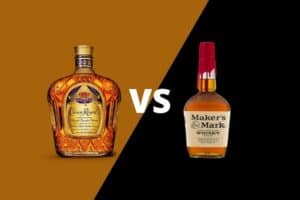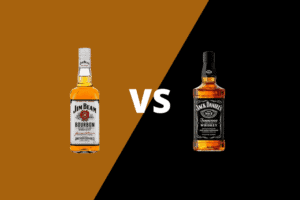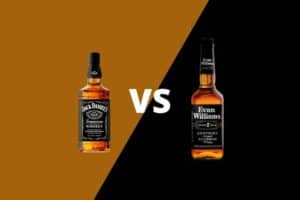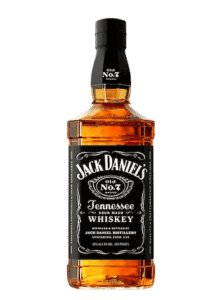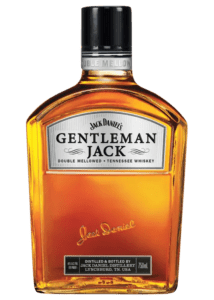Tonight, we’ve got the North American heavyweight whiskey title on the line. Jack Daniel’s and Crown Royal.
These are the two top-selling whiskey brands in North America. Each has its own unique look, and the liquid inside offers significant differences in distillation and barrel aging processes.
The respective black and gold-and-purple labels grace two of the most recognizable whiskeys in the world. But those labels might not offer all the information you need to make an informed decision the next time you’re in your favorite whiskey shop or bar. So today, we’ll take a look at these two big-league brands to help you decide which is the better buy.
Table of Contents
History
Jasper Newton ‘Jack’ Daniel was born in Lynchburg, Tennessee, in 1849. From a young age, he became interested in distilling on the property of a neighbor named Reverend Dan Call. In antebellum Tennessee, it might not have seemed strange the plantation was owned by Rev. Call, but the distillery was run by one of his slaves — a man named Nearest Green. After the Civil War ended, Jack Daniel built a distillery in Moore County and hired Nearest Green as his master distiller. The two perfected their unique whiskey style, which combined and honed the sour mash and Lincoln County processes.
The brand quickly grew as a regional favorite. But in 1910, the state of Tennessee outlawed the production and consumption of distilled spirits. Jack Daniel would die the following year. Tennessee’s prohibition of alcohol was a preview of the U.S. federal amendment that would be passed ten years later. Prohibition pumped the brakes on distillation in the United States. But although the Canadian provinces would haltingly pass various bans on alcohol, distillation continued after the 18th Amendment to the U.S. Constitution went into effect in 1920.
As a result, alcohol producers north of the 45th parallel saw robust sales from American travelers — some of whom smuggled their wares south across the long and porous border. One area that was extremely popular — and profitable — for smugglers was between the port in Windsor, Ontario, and the Michigan side of the Detroit River. A navy of ‘rum runners’ navigated the many islands between Canada and the United States, fueling speakeasies in Detroit, Chicago and the Midwest.
Fortunes were made as the illegal racket gained steam. One of the men who gained wealth and prominence during this era was Samuel Bronfman.
The Bronfman family emigrated from Czarist Russia in the late 19th century to avoid anti-Semitic pogroms. In 1924, Samuel Bronfman founded Distillers Corporation in Montreal, Quebec, with a focus on whiskey. Four years later, Distillers Corporation would acquire Seagram & Sons and their portfolio of brands including Calvert, Dewars and Seven Crown whiskeys.
As one of Canada’s wealthiest men, he was an easy choice to lead the welcoming committee for the King of England’s first visit to North America.
In 1939, the United Kingdom was gearing up for an imminent war with Nazi Germany. The trip was a huge event. King George VI and Queen Elizabeth toured every province in Canada and even ventured into the United States to rally energy for the British war effort. It was the first time a reigning monarch visited either Canada or the U.S.
To welcome the royal entourage, Bronfman raided his expansive barrel house inventories to blend together a whisky fit for a king — which he called Crown Royal. The original 10 cases gifted to the royal entourage were presented in custom-cut crystal decanters in royal purple velvet bags with actual gold stitching. The mass-produced bottles available to customers today are replicas of those original packages.
Mashbills
Jack Daniel’s has a mash bill of 80 percent corn, 8 percent rye and 12 percent malted barley.
Whiskey lovers might note that although Jack Daniel’s is a Tennessee whiskey, its mash bill adheres to the U.S. Alcohol and Tobacco Tax and Trade Bureau’s guidelines for bourbon. According to TTB Standards of Identity, bourbon must use a mash bill or list of grain ingredients that contains at least 51 percent corn.
The Tennessee state legislature enacted laws for the use of the term ‘Tennessee Whiskey’ on the label. In addition to being mashed, distilled and matured in the state of Tennessee in accordance with the rules of bourbon, Tennessee whiskey must also undergo the Lincoln County process in which the newmake distillate is run through maple sugar charcoal before being racked into the barrel.
As a blended Canadian whisky, understanding Crown Royal’s mash bills require a different tack.
Crown Royal uses more than 50 different component whiskies in the blend for each batch. Those whiskies will have various combinations of corn, malted barley, rye and wheat to offer various flavors to the finished product. Some might be nearly neutral grain whiskies, while others will be bold ‘flavouring’ components. Each has its place in the finished product’s flavor profile.
Distillation & Production
We’re looking at two of the largest distillation sites in North America.
Jack Daniel’s is made at the Jack Daniel’s Distillery in Lynchburg, Tennessee. It has six column stills — two stills are 72-inches in diameter, and the other four are 54-inches. With this setup, they can pump out 72 million proof gallons of Tennessee and rye whiskey each year.
Jack Daniel’s is by far the largest distillery in the United States. But the Crown Royal Distillery on Lake Winnipeg in Gimli, Manitoba, isn’t in the United States.
Crown Royal has 12 stills at their disposal, which they use to create the 50 different whiskies used in each blend. Various combinations of grain bills are utilized in these distillations.
The Crown Royal Distillery can crank out about 23.75 million proof gallons a year — about a third of Jack Daniel’s output.
Both distilleries have access to ‘sweet water’ — a limestone-filtered water source. For Crown Royal, it’s the limestone-filtered water beneath Lake Gimli. Jack Daniel’s pulls water from a spring-fed limestone cave that feeds the nearby Elk River.
Maturation
Here, we introduce the Lincoln County process — the defining production feature that separates Tennessee whiskey from bourbon.
For Jack Daniel’s this charcoal mellowing process begins with a pyre containing five feet of sugar maple wood, which is lit and burned into charcoal. The sugar maple charcoal is then placed into large vats where newmake distillate is slowly poured. It takes from three to five days for the liquid to make it through this charcoal filtration.
After the charcoal mellowing process is complete, the distillate is pumped into new American charred oak barrels — the same type of barrel required for Bourbon whiskey products.
As a Blended Canadian Whisky, however, Crown Royal does not require new charred American oak barrels during maturation. According to Canadian law, whisky must be aged for at least three years in any type of cask.
In addition to varying mash bills, another way that the 50 component whiskies are differentiated is through the use of different casks. Most are aged in used bourbon casks because of their availability and low cost on the secondary market. Some may utilize new charred oak or re-charred barrels to replicate bourbon’s bold flavor. Others use the toasted oak barrels preferred by winemakers. Additional cask options include used rum, cognac, wine and beer casks.
In this way, the blending team can develop a broad palette of fragrances and flavors, which will then be combined and blended to form Crown Royal’s signature smooth flavor.
Neither of these brands has an age statement. Moreover, the drastically different maturation requirements make it challenging to compare the two.
Ownership & Lineup
Crown Royal is owned by London-based Diageo PLC – the world’s largest producer of distilled spirits. In addition to Crown Royal, the No. 2-selling whisky brand in the United States, it produces the Johnnie Walker brand, the No. 1-selling whisky brand globally.
Jack Daniel’s is owned by the Brown-Forman Corporation based in Louisville, Kentucky. Although it is one of the largest American-based distilled spirits companies, it is dwarfed by Diageo. Jack Daniel’s is Brown-Forman’s most prominent brand and the No. 1-selling American whiskey in the world.
Price Point & Value
Crown Royal Blended Canadian Whisky retails for about $29 for a 750mL bottle at 80-proof, or 40 percent alcohol by volume.
Jack Daniel’s Black Label Tennessee Whiskey retails for about $24 for a 750mL bottle at 80-proof, or 40 percent ABV.
Tasting Notes
Jack Daniel’s Old No. 7 Tennessee Whiskey
Description: In the glass, Jack Daniel’s Tennessee Whiskey has a golden-amber color.
Nose: Oak and charcoal, with hints of pine and a buttery caramel aroma.
Palate: A spicy pepper flavor, with notes of clove.
Finish: Spicy with lingering pecan, black pepper and cherry.
[Related: Complete Jack Daniel’s Review]
Crown Royal Blended Canadian Whisky
Description: In the glass, Crown Royal has surprisingly healthy legs at 80-proof. It has the color of antique gold.
Nose: Aromas of toasted oak, cherry, rose petal, baking spices – allspice.
Tongue: Delicate mouthfeel, with flavors of almond, cherry, honey, toffee, baking spices – clove and vanilla.
Finish: Light and mellow, with vanilla, toffee, chocolate and orange peel.
[Related: Complete Crown Royal Review]
Verdict…
Whether you’re a Jack or Crown person depends on personal tastes. But regardless of which is your favorite whiskey, it is impossible to deny the influence these two brands have had on the global whiskey market.
Think about it this way. You are likely to find one or both of these bottles of whiskey in liquor stores and whiskey bars across the globe. No matter where you travel in the whiskey-drinking world — from Asia to Europe to South America or Africa — you can find the signature black or gold-and-purple labels on a shelf.
Even the ardent a fan of single barrel bourbon or single malt scotch can appreciate a smooth tumbler of Crown on the rocks or the reliability of a Jack & Coke and know precisely what to expect in the glass.
At about $5 cheaper, Jack Daniel’s might tip the scale for the frugal shopper. But at under $30, both products are firmly in the standard pricing tier. Many whiskey fans might argue that the depth and complexity of Crown Royal’s component whiskies make the additional cost worth it.
Either way, the next time you catch a hankering for whiskey — no matter where on the globe it hits — you know you’ll be able to find one of these powerhouse brands.

